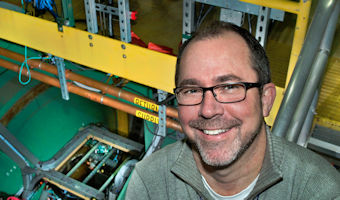The Physics & Astronomy Colloquium Series presents Dave Morrison from Brookhaven National Lab on”Taking the Measure of Ultra High-Energy Nuclear Collisions” on Friday, March 17, at 4:10 p.m. in Walter 245.

Dave Morrison
Abstract: Relativistic heavy-ion collisions produce some of the hottest matter in the universe. Understanding how the strange properties of this trillion degree plasma arise from interactions of its constituent quarks and gluons requires cutting edge experimental efforts, both at the Relativistic Heavy Ion Collider (RHIC) in the U.S. and at the Large Hadron Collider (LHC) in Europe. Expected to take data starting in the early 2020s, the new sPHENIX experiment at RHIC will complement results coming from the LHC, and enable a number of scale-sensitive observables such as heavy quarkonia and jets to delve into the dynamics of the quark-gluon plasma.















Comments